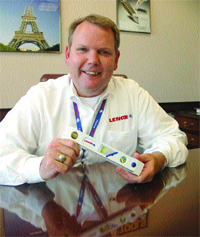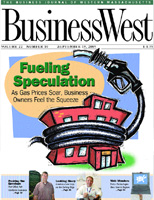| Adams, Jon G.
Adams, Maureen
38 Walnut St.
Northampton, MA 01060
Chapter: 7
Filing Date: 08/11/05 Albano, Mariarosaria
42 Maryland St.
Springfield, MA 01108
Chapter: 7
Filing Date: 08/04/05 Allyn, Jonathan G.
43 Downing Ave.
Holyoke, MA 01040
Chapter: 7
Filing Date: 08/12/05 Anderson, Martin R.
Anderson, Lori A.
4 Greenwood St.
Westfield, MA 01085
Chapter: 7
Filing Date: 08/02/05 Atwood, Thomas E.
Atwood, Barbara L.
50 Day Ave.
Westfield, MA 01085
Chapter: 7
Filing Date: 08/11/05 Baker, Teague Alan
Baker, Lisa Marie
2 Rockvalley Road
Holyoke, MA 01040
Chapter: 7
Filing Date: 08/14/05 Basile, Michael A.
139 Glynn Farms Dr.
East Longmeadow, MA 01028
Chapter: 7
Filing Date: 08/09/05 Beaver, Marjorie I.
52 Queen Ave.
West Springfield, MA 01089
Chapter: 7
Filing Date: 08/07/05 Bielski, Richard J.
Bielski, Karen L.
21 Sunnyside St.
West Springfield, MA 01089
Chapter: 7
Filing Date: 08/02/05 Bisbee, Jo Anne
106 Rolling Green
Amherst, MA 01002
Chapter: 7
Filing Date: 08/07/05 Blair, Kenneth C.
Blair, Laurie P.
44 South St.
Easthampton, MA 01027
Chapter: 7
Filing Date: 08/14/05 Blanchet, Patricia K.
1 North Kellogg Road
P.O. Box 144
Williamsburg, MA 01096
Chapter: 7
Filing Date: 08/08/05 Boudreau, Arthur A.
Boudreau, Shirley M.
8 Gunn Road Ext.
Southampton, MA 01073
Chapter: 7
Filing Date: 08/11/05 Brown, William H.
351 Pleasant St.
Northampton, MA 01060
Chapter: 7
Filing Date: 08/08/05 Burkhard, Michael J.
771 Parker St.
East Longmeadow, MA 01028
Chapter: 7
Filing Date: 08/02/05 Butterfield, Lexia Lynette
121 North Main St.
Belchertown, MA 01007
Chapter: 7
Filing Date: 08/03/05 Canteenwalla, Ferdauz N.
Canteenwalla, Alice M.
45 Willow St., Apt. 54
Springfield, MA 01103
Chapter: 7
Filing Date: 08/08/05 Carpenter, Charlise Marie
21 Alvord Place
South Hadley, MA 01075
Chapter: 7
Filing Date: 08/03/05 Cecchetelli, Joseph A.
34 Church St.
Agawam, MA 01001
Chapter: 7
Filing Date: 08/02/05 Champagne, Michael L.
137 Hanson Dr.
Springfield, MA 01128
Chapter: 7
Filing Date: 08/11/05 Claudio, Carmelo
298 Oakland St., Apt. 7
Springfield, MA 01108
Chapter: 7
Filing Date: 08/03/05 Colly, Christopher Todd
Colly, Christa Leigh
72 North Main St.
Florence, MA 01062
Chapter: 7
Filing Date: 08/14/05 Colon, Jacob Matthew
607 Beech St.
Holyoke, MA 01040
Chapter: 7
Filing Date: 08/14/05 Corkum, Russell S.
71 Northwood Ave.
West Springfield, MA 01089
Chapter: 7
Filing Date: 08/02/05 Cornelius, Gwendolyn Crocker
14 Pinewood Lane
Westfield, MA 01085
Chapter: 7
Filing Date: 08/07/05 Cortes, Erick M.
48 Blodgett St.
Springfield, MA 01108
Chapter: 7
Filing Date: 08/04/05 Crosby, Fred T.
Crosby, Kathy L
157 Goodwin St.
Indian Orchard, MA 01151
Chapter: 7
Filing Date: 08/04/05 Cust, Francesca B.
64 Hillside Dr.
Springfield, MA 01118
Chapter: 7
Filing Date: 08/02/05 Damkauskas, Lou C.
PO Box 8022
Westfield, MA 01086
Chapter: 7
Filing Date: 08/02/05 Davignon, Tiffany D.
214 East Guinea Road
Williamsburg, MA 01096
Chapter: 7
Filing Date: 08/08/05 DeGeorge, Gary R.
401 Blisswood Dr.
Ludlow, MA 01056
Chapter: 13
Filing Date: 08/02/05 Drug Assist Health Solutions, Inc.
26 Fort Pleasant Ave.
Springfield, MA 01108
Chapter: 11
Filing Date: 08/10/05 Dudley, Leonard C.
140 Woodlawn St.
Springfield, MA 01108
Chapter: 13
Filing Date: 08/02/05 Dunigan, Kelly M
P.O. Box 745
Chicopee, MA 01021
Chapter: 7
Filing Date: 08/12/05 Dwight, Jeanne W
PO Box 571
Leeds, MA 01053
Chapter: 7
Filing Date: 08/09/05 Everett, Stephanie A.
17 George Loomis Road
Southwick, MA 01077
Chapter: 7
Filing Date: 08/11/05 Ferreira, Stephen J.
170 Acrebrook Road
Springfield, MA 01129
Chapter: 7
Filing Date: 08/05/05 Ferrington, Dave
Ferrington, Lisa
370 Mill Valley Road
Belchertown, MA 01007
Chapter: 7
Filing Date: 08/08/05 Foster, Karen R.
106 Edgemont St.
Springfield, MA 01109
Chapter: 7
Filing Date: 08/09/05 Gailpeau, Jason Paul
135 Meadow St.
Westfield, MA 01085
Chapter: 7
Filing Date: 08/01/05 Gaines, Edmund P.
P.O. Box 464
Granby, MA 01033
Chapter: 7
Filing Date: 08/13/05 Gallant, April Bella
57 High St.
Agawam, MA 01001
Chapter: 7
Filing Date: 08/11/05 Goldrup, James L.
159 Kerry Dr.
Springfield, MA 01118
Chapter: 7
Filing Date: 08/12/05 Gordon, Lisa M.
1007 River Road
Agawam, MA 01001
Chapter: 7
Filing Date: 08/05/05 Greenwood, Edward J.
65 Craig Dr., Apt. P4
West Springfield, MA 01089
Chapter: 7
Filing Date: 08/02/05 | Grimes, Steven D.
Grimes, Deborah A.
25 Gerrard Ave.
Springfield, MA 01109
Chapter: 7
Filing Date: 08/15/05 Guadeloupe, Heather S.
87 Fenwick St.
Springfield, MA 01109
Chapter: 7
Filing Date: 08/15/05 Guerin, Robert L.
Guerin, Laura I.
45 Schuyler Dr.
East Longmeadow, MA 01028
Chapter: 7
Filing Date: 08/01/05 Hebert-Voudren, Michelle J.
29 Brentwood Dr.
Westfield, MA 01085
Chapter: 7
Filing Date: 08/08/05 Hirschhaut, Robert J.
91 Sumner Ave., Apt. 1
Springfield, MA 01108
Chapter: 7
Filing Date: 08/09/05 Holesovsky, Thomas John
Holesovsky, Gretchen Muriel
32 Park St.
Belchertown, MA 01007
Chapter: 7
Filing Date: 08/13/05 Hughes, Michael Christopher
53 Olmsted Dr.
Springfield, MA 01108
Chapter: 7
Filing Date: 08/12/05 Januszewski, Tadeusz
4 Manhan St.
Southampton, MA 01073
Chapter: 7
Filing Date: 08/11/05 Jaycox, William Hector
Jaycox, Diane Marie
1546 Westover Road
Chicopee, MA 01020
Chapter: 7
Filing Date: 08/07/05 Johnson, Oscar L.
71 Ely St.
Holyoke, MA 01040
Chapter: 7
Filing Date: 08/15/05 Josefiak, Deborah M
256 Newhouse St.
Springfield, MA 01118
Chapter: 7
Filing Date: 08/07/05 Kamenides, Mark Peter
1134 Northampton St.
Holyoke, MA 01040
Chapter: 7
Filing Date: 08/03/05 Keim, Rachel Colette
124 Chesterfield Road
Leeds, MA 01053
Chapter: 7
Filing Date: 08/09/05 Keough, Thomas H.
93 Grochmal Ave. #86
Indian Orchard, MA 01151
Chapter: 7
Filing Date: 08/02/05 Kerr, James Robert
51 Maple Ter.
West Springfield, MA 01089
Chapter: 7
Filing Date: 08/11/05 Kibbe, Louise R
275 Regency Park Dr.
Agawam, MA 01001
Chapter: 7
Filing Date: 08/02/05 Kimball, Craig R.
20 Jackson St.
Belchertown, MA 01007
Chapter: 7
Filing Date: 08/07/05 Klein, Stephen Daniel
48 Sergeant Ave.
Chicopee, MA 01020
Chapter: 7
Filing Date: 08/03/05 Kras, Jennifer R.
42 Townhouse Dr.
Easthampton, MA 01027
Chapter: 7
Filing Date: 08/08/05 LaPointe, Bryan Lee
LaPointe, Dawn Marie
47 Coleman St.
Springfield, MA 01109
Chapter: 7
Filing Date: 08/05/05 LaRusso, John J.
67 Corey Colonial
Agawam, MA 01001
Chapter: 7
Filing Date: 08/02/05 Lawler, Lucy S.
44 Bay State Road
Holyoke, MA 01040
Chapter: 7
Filing Date: 08/11/05 Laxton, Carol Anne
44D Colonial Circle
Chicopee, MA 01020
Chapter: 7
Filing Date: 08/05/05 Leary, Kevin M.
1080 Main St.
Holyoke, MA 01040
Chapter: 7
Filing Date: 08/09/05 Leger, Todd W.
365 Grand Valley Road
Springfield, MA 01128
Chapter: 7
Filing Date: 08/12/05 Leidberg, Richard E.
Leidberg, Penelope H.
4B Arthur St.
Easthampton, MA 01027
Chapter: 7
Filing Date: 08/02/05 L’Heureux, John A.
49 Dakota Dr.
Chicopee, MA 01013
Chapter: 13
Filing Date: 08/04/05 Line, Peter C.
25 Joy St.
Ludlow, MA 01056
Chapter: 7
Filing Date: 08/12/05 Liptak, James Peter
124 Chesterfield Road
Leeds, MA 01053
Chapter: 7
Filing Date: 08/09/05 Lorenzo, Wilmari M.
59 Margaret St., Apt.
Springfield, MA 01105
Chapter: 7
Filing Date: 08/02/05 Lumpkin, Pamela A.
83 Chmura Road
Hadley, MA 01035
Chapter: 7
Filing Date: 08/15/05 Pinkney, April M.
34 Berkley St.
Springfield, MA 01109
Chapter: 13
Filing Date: 08/09/05 Pollard-Jordan, Laurie J
7 Country Club Dr.
Southwick, MA 01077
Chapter: 7
Filing Date: 08/10/05 Quinn, Jeannette E.
22 Belmont Ave.
Northampton, MA 01060
Chapter: 7
Filing Date: 08/08/05 Reid, Viola
93 Grochmal Ave.
Indian Orchard, MA 01151
Chapter: 7
Filing Date: 08/02/05 Robbins, Clifford R.
249 Westfield St.
West Springfield, MA 01089
Chapter: 7
Filing Date: 08/08/05 Roy, Russell K.C.
c/o Tara Boycher
129 King St.
Northampton, MA 01060
Chapter: 7
Filing Date: 08/02/05 Salvas, Cornelia B.
49 Eureka St.
Springfield, MA 01104
Chapter: 7
Filing Date: 08/12/05 Santos, Lawrence Neal
Santos, Angela Marie
15 Holyoke Road
Westfield, MA 01085
Chapter: 7
Filing Date: 08/07/05 Scarpa, Kelsey Danielle
273 Lyon St.
Ludlow, MA 01056
Chapter: 7
Filing Date: 08/14/05 Scott, Irene A.
11 Klondike Ave.
Westfield, MA 01085
Chapter: 7
Filing Date: 08/08/05 Scroggins, Richard
P.O. Box 91456
Springfield, MA 01139
Chapter: 7
Filing Date: 08/12/05 Siegal, Audrey
29 Reed Ave.
Chicopee, MA 01020
Chapter: 7
Filing Date: 08/02/05 Simpson, Diane G.
18 Knapp St.
Chicopee, MA 01013
Chapter: 7
Filing Date: 08/02/05 Smith, Susan
26 Sterling Road
Agawam, MA 01001
Chapter: 7
Filing Date: 08/08/05 | Soler Mateo, Eiizabeth
83 Phillips Ave.
Springfield, MA 01119
Chapter: 7
Filing Date: 08/06/05 St. Andre, Irene S.
153 Theroux Dr.
Chicopee, MA 01020
Chapter: 7
Filing Date: 08/11/05 Lund, Jon Eric
PO Box 509
Agawam, MA 01001
Chapter: 7
Filing Date: 08/07/05 Lynes, Robert W.
P.O. Box 552
South Hadley, MA 01075
Chapter: 7
Filing Date: 08/10/05 Maldonado, Antonia
42 1/2 Franklin St.
Westfield, MA 01085
Chapter: 7
Filing Date: 08/09/05 Maldonado, Eugenia
64 Taylor St.
Holyoke, MA 01040
Chapter: 7
Filing Date: 08/03/05 Markland, Megan Sarah
191 Moss Road
Springfield, MA 01119
Chapter: 7
Filing Date: 08/14/05 Marques, Rose M.
155 Prospect St.
Ludlow, MA 01056
Chapter: 7
Filing Date: 08/02/05 Mateo, Raymond
83 Phillips Ave.
Springfield, MA 01119
Chapter: 7
Filing Date: 08/06/05 Mayotte, Amy L.
85 Martin Farm Road
Hampden, MA 01036
Chapter: 7
Filing Date: 08/05/05 Medina, Celinamaria
8 Utica St.
Springfield, MA 01104
Chapter: 7
Filing Date: 08/11/05 Miller, Lionel S
19 Honey Pot Road
Southwick, MA 01077
Chapter: 7
Filing Date: 08/11/05 Missildine, James
41 Greenwich St.
Chicopee, MA 01013
Chapter: 7
Filing Date: 08/09/05 Montmeny, Robert W.
Montmeny, Susan M.
86 Brewster St.
Springfield, MA 01119
Chapter: 7
Filing Date: 08/08/05 Moore, James M.
Moore, Alice M.
27 Empress Court
Springfield, MA 01129
Chapter: 7
Filing Date: 08/02/05 Morris, David G.
Morris, Mary Louise
21 West Glen St.
Holyoke, MA 01040
Chapter: 7
Filing Date: 08/12/05 Morrisino, Paul A.
Morrisino, Laura P.
37 Michel St.
East Longmeadow, MA 01028
Chapter: 7
Filing Date: 08/04/05 Nadeau, Janet A.
19 Columbus Ave.
Northampton, MA 01060
Chapter: 7
Filing Date: 08/08/05 Negron, Milagros
75 Balis St.
Springfield, MA 01109
Chapter: 13
Filing Date: 08/10/05 Nieves, Anibal
141 Phoenix Ter.
Springifeld, MA 01104
Chapter: 7
Filing Date: 08/11/05 Nowak, Michael E.
93 Harding St.
Chicopee, MA 01013
Chapter: 7
Filing Date: 08/02/05 Nunez, Iris V.
63 Central St. – Apt A
Springfield, MA 01105
Chapter: 7
Filing Date: 08/09/05 Page, Stacey C.
40 DeRoy Dr.
Chicopee, MA 01020
Chapter: 7
Filing Date: 08/12/05 Paksi, Sandor
344 Belmont Ave.
Springfield, MA 01108
Chapter: 7
Filing Date: 08/13/05 Parent, Robert Daniel
92 Redden St.
Springfield, MA 01119
Chapter: 7
Filing Date: 08/04/05 Paton, Darcy Laine
1343 East Mountain Road
Westfield, MA 01085
Chapter: 7
Filing Date: 08/11/05 Paulson, Michael R.
124 Yeoman Ave.
Westfield, MA 01085
Chapter: 7
Filing Date: 08/02/05 Pelletier, George Louis
33 Mattoon St., Apt G
Springfield, MA 01105
Chapter: 7
Filing Date: 08/07/05 Phillips, Bernice M.
41 Elmer Dr.
Chicopee, MA 01013
Chapter: 7
Filing Date: 08/03/05 St. John, Lynn A.
92 Fordham Ave.
Feeding Hills, MA 01030
Chapter: 7
Filing Date: 08/07/05 Stramaglia, Angela Nina
47 Broad St., # C-43
Westfield, MA 01085
Chapter: 7
Filing Date: 08/07/05 Susa, Thomas J.
444 Ventura St.
Ludlow, MA 01056
Chapter: 7
Filing Date: 08/04/05 Swartz, Paul E.
33 Orchard St.
Ludlow, MA 01056
Chapter: 7
Filing Date: 08/15/05 Swinton, Ronald
267 Talmadge Dr.
Springfield, MA 01118
Chapter: 7
Filing Date: 08/05/05 Szumowski, Marilyn A.
PO Box 16
Chicopee, MA 01014
Chapter: 7
Filing Date: 08/07/05 Thomas, Anita L
55 Nagel St.
Indian Orchard, MA 01151
Chapter: 7
Filing Date: 08/04/05 Thompson, Linda D
275 North Valley Road
Pelham, MA 01002
Chapter: 7
Filing Date: 08/10/05 Trudeau, Edward F.
Trudeau, Linda M.
30 Belvidere Ave.
Holyoke, MA 01040
Chapter: 7
Filing Date: 08/08/05 Veighey, William James
54 Newell St.
Chicopee, MA 01013
Chapter: 7
Filing Date: 08/03/05 Voudren, Donald F.
29 Brentwood Dr.
Westfield, MA 01085
Chapter: 7
Filing Date: 08/08/05 Walker, Leslie F.
93 Grochmal Ave.
Indian Orchard, MA 01151
Chapter: 7
Filing Date: 08/02/05 West, Edward T.
30 Circle Dr.
Chicopee, MA 01013
Chapter: 7
Filing Date: 08/10/05 Wheeler, Steven Christopher
26 Olmstead Dr., 2nd Floor
Springfield, MA 01108
Chapter: 7
Filing Date: 08/03/05 Wollmershauser, Joan M.
157 Cambridge St.
Feeding Hills, MA 01030
Chapter: 7
Filing Date: 08/03/05 Zeronda, Joseph D.
8 Utica St.
Springfield, MA 01104
Chapter: 7
Filing Date: 08/11/05 |




















